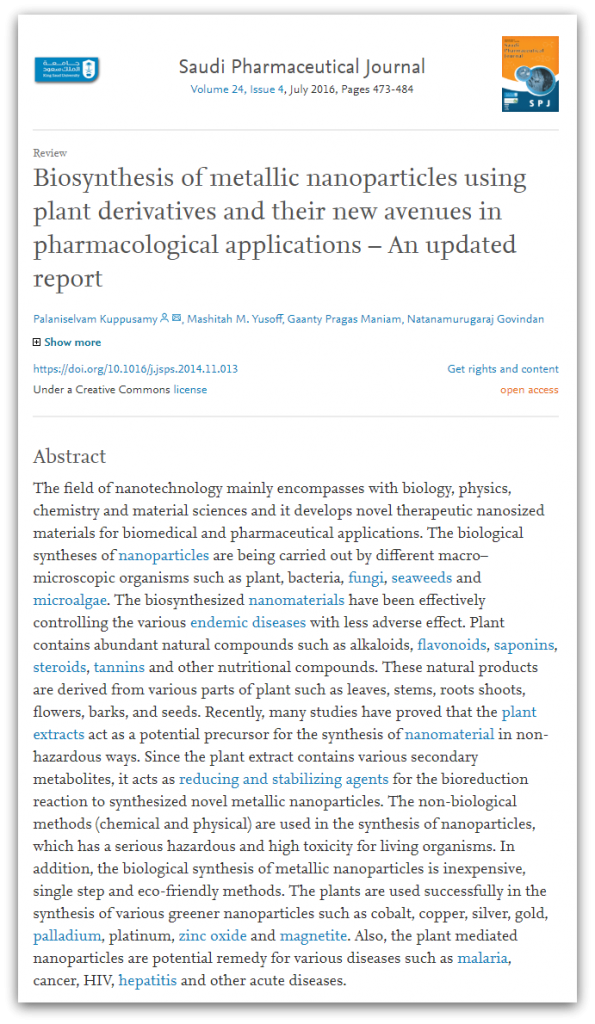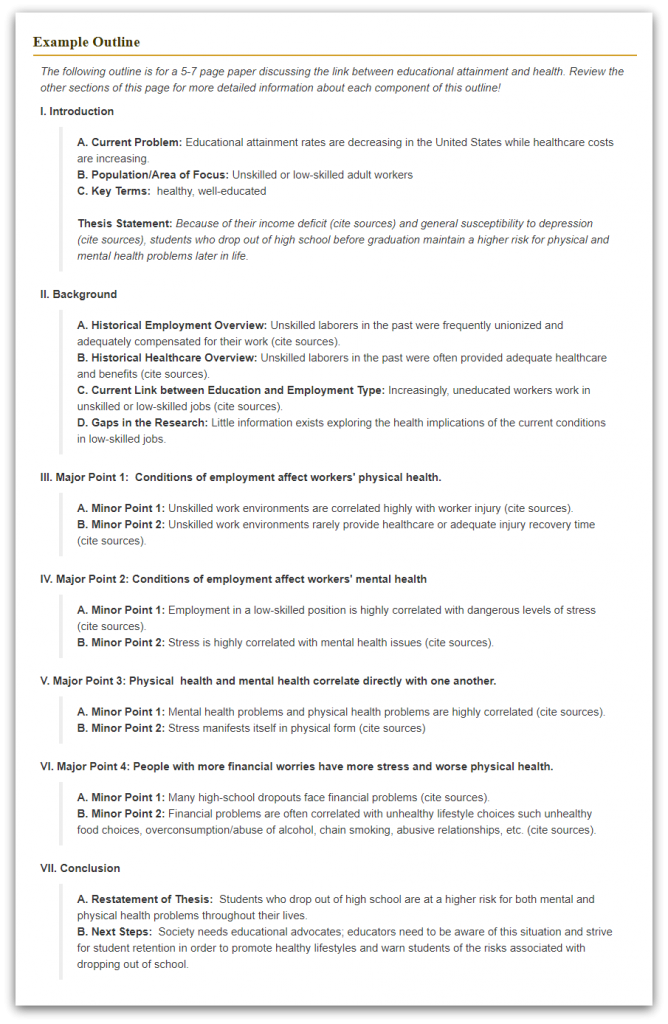So you have a blank document opened and you don’t know how to write a research paper from scratch. Well, academic writing is indeed challenging and much different than other types of writing. If you haven’t written a research paper and it is your first time, it could turn out to be an overwhelming task.
It gets more challenging if you have to write your research paper fast. It really gets tough. And if you don’t learn how to write a good research paper fast that is more than a well-written paper, you’ll find yourself in deep trouble.
However, if you know what steps to follow and how to do a research paper, it will get a whole lot easier. All you have to do is follow a systematic approach. Follow a step-by-step guide and it will become a piece of cake. That’s why I created this guide below.
It shows you what steps you have to take in order to write a research paper and how to get it finished and submitted on time. It covers everything including topic selection, research, write-up, editing and proofreading, and much more.
This guide is all you need to write a killer research paper fast. Let’s get started.
What is a Research Paper?
A research paper is an extended form of essay that represents original research work of the author. It is an academic piece on a topic that is based on original research, arguments, interpretation, and analysis. Examples of a research paper include term papers, doctoral dissertations, and scientific research articles.
So who needs to write a research paper?
Anyone can write a research paper but generally, graduate students, PhDs, and academicians write research papers and have them get published in journals. The idea is to share your research and findings with the world.
Here is a research paper example from the Saudi Pharmaceutical Journal:

Here is another research paper example from the Journal of Academic Librarianship:

Yes, research paper involves a lot of research and this is one reason why a lot of people struggle. If you get to know how to write a good research paper and you know the exact steps, you can manage it easily.
How to Write a Research Paper: Step-by-Step Guide
Here are the steps that you can follow to write a good research paper fast:
- Set objectives
- Plan
- Choose a topic
- Review literature
- Organize your research
- Create a thesis
- Create an outline
- Start writing
- Edit and revise
These steps are covered in detail below.
Step #1: Set Objectives
To learn everything on how to write a research paper quickly, the first thing you need to do is set clear objectives. Why do you need to write a research paper in the first place?
There are several reasons why you should end up writing a research paper:
- It could be a requirement from your university or supervisor to get your degree
- It could be to share your original research work with the right people
- To move ahead in your career as an academician or a professional
- You’re writing a research paper just to let others know of your experience and you don’t intend to get anything in exchange
If you’re writing a research paper as a degree requirement, you’ll approach it differently as compared to if you’re writing one as a professor. Setting the right objectives and goals for your research paper helps you stay focused and organized.
Ask yourself following questions to set objectives for your assignment:
Why do you need to write a research paper?
What is its deadline?
What is the research paper format?
Is there a specific word count requirement?
Do you have a topic in mind?
Where do you wish to publish your research paper?
Set realistic yet challenging objectives and goals for your assignment based on your answers. If you have to write a research paper as a requirement for your graduate degree, you will get clear objectives from your university. It will make your job easier. You just have to stick to them.
However, if you’re writing a research paper to get it published in a journal to strengthen your resume and to get a better job, you’ll have different objectives that will be more geared towards the journal’s requirements.
Step #2: Plan
After you have identified objectives for your research paper, you need to create a plan to achieve your objectives. If you’re serious about how to do a research paper, you should plan it. The best way to plan your research article is to create a Gantt chart.
A Gantt chart helps you manage your research paper and set schedule for different activities (discussed later in this guide). You’ll be able to complete important tasks on time so that you don’t end up missing deadlines.

If, for instance, you have to submit a research paper to a journal’s call for paper request, you’ll have to get it ready well before the deadline. This is where the Gantt charts are very helpful. You can set a schedule based on the priority of the tasks.
You can’t write your complete research paper in a single go even if it has to be 3K words or less. You need to collect data and you have to analyze your data using a statistical tool. And this is where things get complicated because data collection and analysis can take months. It isn’t necessary that you personally collect data so if someone else is collecting data, you have to manage things at your end smartly. You can’t do it without planning and proper scheduling.
Planning is essential because you have to rely on different resources for data collection, data analysis, data interpretation, data reporting, editing, etc. When there are multiple individuals and tools involved, you need to set your priorities and you need a proper plan that will show you what needs to be done, who will do it, when it should start, and when a task should be completed.
At the same time, there are certain resources that you’d need special access to from your university such as statistical tools. If you’re analyzing data in SmartPLS, you’d need a key from your university which remains active for 30 days. Not only that you have to request a key on time after you have collected the data, but you’ll also have to make sure that data is analyzed in 30 days else you’ll have to request for key renewal which takes a few days.
In the absence of planning, you might not get access to several critical university resources and this will significantly delay your research article.
A proper plan will let you put requests for resources well before the time that will be entertained as compared to putting requests at the last moment (that are normally rejected due to resource unavailability or overload).
Step #3: Choose a Topic
Your research topic is of central importance in the research article. You should give special attention to topic selection as everything else will be derived from the topic. A wrong topic selected and you won’t be able to get back on track very soon.
There are two ways to choose a topic for your research paper:
- If you’re writing a research paper for a degree requirement, you’ll receive guidelines from your supervisor/university. Follow the guidelines. You’ll have to choose a topic of your interest.
- If you’re writing a research paper for publication in a journal, you’ll have to identify a journal, read its scope, read author guidelines, and then choose a topic that is most likely to be accepted by the journal for publication.
Even if you’re writing a paper as an assignment, you’ll still have to get it published in a relevant journal so you have to choose an appropriate journal first. That’s the right approach to choosing a topic.
So your research topic should meet these two criteria:
- You should have an interest in the topic.
- You have identified an appropriate journal that’s likely to accept and publish your research article.
Choosing a topic of your interest will make it easier for you to write about it. Your passion will motivate you and you’ll rarely feel bored. Aligning your topic to a specific journal will make publication easier. Journals are very choosy and publish articles that meet their scope and won’t publish anything that doesn’t meet their scope.
Here is an example of the scope of the Alternative Law Journal:

If you submit an article to this journal, it will be accepted if and only if it meets the aims and scope. And this holds true for all the journals out there. So you have to choose a topic and then you have to find a relevant journal that will accept your research paper.
Here are a few actionable tips on how to choose a topic for your research paper:
- The topic should meet the assignment requirements.
- Use brainstorming to identify a decent research topic.
- Start from a broad topic such as human resource management and then narrow it down. Ensure that the topic isn’t too broad.
- Narrow down the focus. The more focused your topic is, the better. Broader topics don’t tend to do well. For instance, you can narrow down your human resource management topic to organizational citizenship behavior in the banking sector.
- Don’t narrow your topic too much as it will limit your options for data collection. There has to be a balance between too broad and too narrow.
- Ask industry experts as they might be able to help you identify a hot topic based on their experience and the challenges they’re facing in the industry. This will make your research practically applicable and useful for practitioners.
- The topic needs to be of interest for practitioners or a certain group (e.g. researchers). If it only interests you and is considered invaluable by others, you’ll struggle to get your research paper published in a high impact journal.

Once you have finalized your topic, you then need to identify a journal to get your article published. This is the stage where you’ll be able to further refine your topic, tweak it, and make it compatible with the journal’s requirement.
Here are some tips to identify the right journal based on your research topic and how to make your topic compatible with your preferred journal:
- Visit leading publishers such as Elsevier, Sage, Wiley, etc. and search for journals based on your topic.
- Use Google Scholar to identify recent articles published on your topic.
- Read the aims and scope of the journals to screen them and identify the ones that are most likely to publish your article.
- Read the recently published article in these journals. This will give you an idea of what type of articles they publish. Tweak your research topic if needed to make it compatible with a journal’s policies.
- Read author guidelines and any special instructions that will help you craft a better research paper.
- Target one journal and stick with its requirements. This will help you focus on one journal’s requirements which makes acceptance easier as you’ll write specifically for it.
Once your topic is finalized, you’re ready to proceed with an in-depth literature review to create your thesis and outline.
Step #4: Literature Review
Reviewing literature is an essential step of how to write a research paper. You can’t do research without reviewing literature.
The literature review is a comprehensive summary of previous research on your selected topic. It involves reviewing existing research papers, books, scholarly articles, and any other authentic and reliable data source that is related to your topic.

The purpose of the literature review is to describe, summarize, and evaluate previous research on your topic to find what has already been done and where you want to move from here. Existing literature helps you identify theories on your topic, history of the topic, current issues, and future research directions that help you refine your research topic and build a thesis.
The literature review is essential as it lets you understand the topic and previous research. You don’t want to end up researching an issue that’s already covered by someone else. How’d you find what work other researchers have done on the subject? By reviewing literature. Besides, you get to learn methodologies, theories, models, and other critical information about your topic during the literature review process.
Since writing a research paper is much different than writing a novel where you can write a novel even if you haven’t read any novel in your life. In case of writing a research article, you can’t write a research paper (on any topic) without reading existing literature. You need a base and a theory to support your arguments. It’s a scholarly article that can’t exist in isolation.
Here is what in-depth literature review will help you with:
- It will clarify your topic and will help you refine it
- It helps you find theories and models
- It helps you narrow the focus of your research
- You get to learn everything about your research topic
- You get resources that you can cite in your research paper
- It helps you create a thesis for your research paper
- You give an overview of the past research to the readers which helps them better understand your research and how it is relevant to the existing research

Follow these steps to review the literature for your research paper.
Step #1: Select Literature to Review
Identify keywords that are relevant to your research topic and start searching for the existing literature. Google Scholar and your university’s library should be your starting point.
Besides, you can access databases like JSTOR, Medline, EBSCO, and others to search for articles, books, and other relevant material. You’ll be able to access databases and journals that your university has an agreement with so it’d be best to use your university’s resources.
Step #2: Take Notes
The literature review is a part of your research paper so it will be best to start writing it as you review and analyze literature. You need to interpret and synthesize published work with your critique.

If you want, you can create an Excel sheet where you can add article titles with their key findings and your comments. This type of sheet helps you keep a record of all the literature reviewed.
Step #3: Write
Don’t just write a summary of the literature rather add your arguments, critique, and analysis. Create a structure for your literature review as it makes writing easier. Here is a structure that you should follow:
- Introduction: Tell readers the purpose of the introduction.
- Body: Organize literature in one of the forms: Systematic, chronological, theoretically, thematic, or methodological.
- Conclusion: Highlight key findings and summarize your literature review.
By the time you’ll be done with the literature review, you’ll have a thorough understanding of your research topic.
Step #5: Organize Your Research
If you’re writing a research paper for the first time and don’t know anything about how to write a good research paper or how to do a research paper, you’ll get lost easily.
Why?
Because writing a research article is not the same as how to write a novel. It’s much different. You have to read a lot of literature, you have to take notes, and you have to keep everything organized.
Organizing your research, literature, notes, PDFs, data files, and other resources are essential. Your research paper isn’t just the paper you write but it is based on and is linked to several other elements.
Organizing your research paper and research work is essential.
It also helps you write a research paper fast. I mean if you’re short of time, you don’t want to spend half of your day finding missing files, literature, and theories that you have already reviewed. This is why using tools is essential.
First off, if you’re interested in writing your research paper fast, you need a writing software like Squibler.
Why Squibler specifically?
Because it helps you organize your content, paper, literature, and everything else. Authors use it to organize their manuscripts and to get their books published fast (in as low as 30 days). This shows how powerful this tool can be for your research paper’s organization.
Squibler alone will reduce your writing time to a great extent. If you’re in a hurry, don’t miss it.
But Squibler isn’t all you need, it helps you manage and organize your files, manuscript, and content, you still need other tools to manage other stuff. Here is a list of tools that you must use to organize your research:
- NVivo for reviewing the literature and for qualitative analysis
- EndNote for managing references and citations
- Grammarly for writing, editing, plagiarism, and proofreading
- Evernote for taking notes and managing your research
- Scrivener for writing and managing your research paper
You should also check with your university for tools and apps. You might get access to tools for free that have partnered with your university. In any case, don’t go without tools as they can save you a lot of time at the end of the day.
Step #6: Create a Thesis Statement
Now that you have reviewed a lot of literature, refined your research topic, and have organized your research work (so far) appropriately, it is time to create your thesis statement.
A thesis statement is a one-sentence that defines your research and topic. It tells the readers what your research paper will discuss. Here is an example of a thesis statement:

The thesis statement is derived from the literature. You can’t (and in fact shouldn’t) write a thesis statement without extensive review of the literature.
Here is what a thesis statement does:
- It tells readers what big problem you’re addressing
- It sets the expectations of the readers
- It shows how you’ll interpretation of the question your research paper will address
- It makes a claim
In simple words, your thesis statement is a sentence that represents your point of view (or argument) about the topic that you’ll defend in the rest of the research paper.
Here is an example of a good and a bad thesis statement:

Your thesis statement should be:
- Clear
- Unambiguous
- Specific
- Shows your position or point of view
A great technique to create a thesis statement is to convert your research paper topic into a question and then answer the question is a sentence or two. The answer to the question will be your thesis statement.
For instance, your topic is to discuss the benefits of cinnamon for weight loss.
Convert it into a question as: What are the benefits of using cinnamon for weight loss?
Answer it as: The benefits of using cinnamon for weight loss are …
This answer is your thesis statement. Make it a bit scholarly as: Using cinnamon will reduce weight by …
That’s how simple it is.
Step #7: Create an Outline
Once you’re done with the thesis statement, you need to create an outline for research paper. You can skip this step if you want but it isn’t recommended. If you plan to write a decent research article and if you want to know how to write a good research paper, you should know the ins and outs of creating an outline.
An outline for research paper helps you structure your paper. It tells you what you’re supposed to do and how to do it. And it helps you write your research paper fast.
Here is how an outline for research paper looks like:

The outline can be as detailed as you want or as short as you want it to be. You should, however, keep outline fairly detailed by listing all the headings and subheadings. List what you’ll cover in each subheading. The following outline for research paper is a perfect example that lists all the major portions of the article:

If you’re writing a research paper as a degree requirement, you’ll get an outline template from your university. Follow the template and stick with it.
If your university doesn’t provide you with a template, you can find a free template from the internet. There are tons of free templates available out there for research papers that help you with research paper format and outline.
For journal submissions, you’ll have to create an outline using the journal’s author guidelines. Journals have specific requirements in terms of word count, headings, subheadings, number of tables, number of figures, etc. They provide you with in-depth details so in this case, creating an outline becomes a whole lot easier.
Follow these tips to create a perfect outline for your research paper:
- Start by listing the major headlines including abstract, introduction, literature review, methodology, results, discussion, conclusion, bibliography, and appendices.
- Add subheadings by looking at previous research papers.
- Since you have already reviewed literature, you’ll be in a better position to identify subheadings and sections for your research paper.
- Keep outline flexible.
- Don’t hesitate to tweak your outline. You should update it as you start writing your paper.
Step #8: Start Writing
Finally, it’s the stage in your how to write a research paper guide where you can start writing it. I have to admit that writing is the most difficult part. The good news is that you have already done most of the hard work by preparing an outline, thesis statement, and literature review.
You now need to write the remaining sections as per outline which normally includes:
- Introduction
- Methodology
- Results
- Discussion
Introduction
The introduction is derived from the thesis statement and literature review. You have to write the background, research purpose, research questions and objectives, the significance of your research paper, and the structure of the research paper.
It isn’t a very detailed section rather it lays the foundation of your paper. The introduction needs to be interesting so readers don’t lose interest and continue reading.
Methodology
This section comes right after the literature review where you mention the methodology you’ll follow to conduct your research. This is an important section of your research paper that needs to be written clearly.
Methodology includes:
- Research methods
- Research philosophy
- Population and sampling techniques
- Data collection and data analysis techniques
- Instruments and scale used
- Pilot study details
You need to justify your selection of research methods and techniques with strong arguments. For instance, if you’re doing qualitative research, you need to present arguments as to why you selected qualitative research as opposed to quantitative.
Results
This section covers the results of your research paper. It happens to be a crucial part of your research paper as it highlights the findings of your research which is your contribution.
Write your results scientifically in this section and relate them to your thesis statement and research questions. Add tables, figures, and other details from the statistical tool that you used in your study.
Discussion
Explain your results in detail in the discussion section. Link results to theory and literature. You need to explain results in an easy-to-understand language not just scientifically. Provide arguments for your results that weren’t supported by theory or weren’t as expected.
The discussion section includes:
- Discussion on results
- Limitations of the research paper
- Implications
- Future research directions
Finally, write a conclusion that summarizes your research paper’s findings and contribution. The conclusion should give a concise overview of your research paper that should be meaningful in isolation.
Step #9: Edit and Revise
This is the last step in how to write a research paper process. You have written the first draft and it’s time to edit and revise it.
You need to complete the first draft of your manuscript well before the submission date so you get time to edit and tweak it. This is where the Gantt chart becomes so handy. In the absence of planning, you’ll finish your first draft right on the last day leaving no room for edits.
Editing your research paper is essential. You need to go through it once and fix errors and typos. Then use editing software like Grammarly to fix grammatical errors, typos, sentence structure errors, and to check plagiarism. It is an extremely handy tool. You can use its Word extension to fix errors as you type.
As you find and fix errors in your draft, revise it by fixing sentence structure and flow. Academic writing is different than other types of writing (fiction, non-fiction, etc.) so you have to make sure your research paper’s language is academic. You might have to revise sentences and even paragraphs to make them robust.
It is a good idea to have someone preferably a colleague review your research paper. This is a great way to find and fix errors that might go unnoticed otherwise.
Start Writing Your Research Paper
A research paper is way different than novel writing and other types of writing. If you know how to write a novel or how to write a book, it doesn’t mean you’ll know how to write a research paper. If you think you can write a research paper just because you have written a novel, you’re mistaken.
Research paper writing is something different. You need to learn it. You need to at least learn the basics. The 9-step to writing a research paper fast discussed in this guide is more than enough to help you get started right away. You’re all set to write an amazing paper.
Get cracking.












